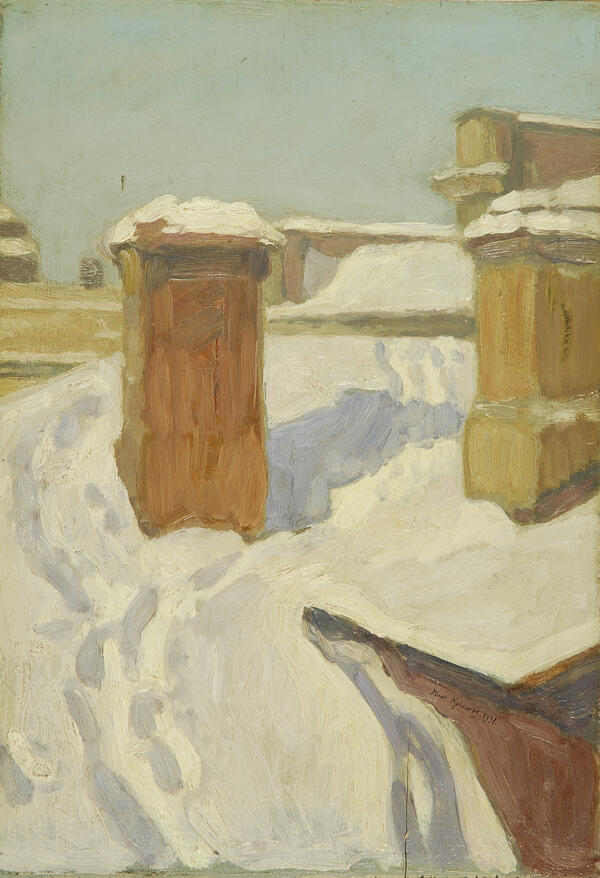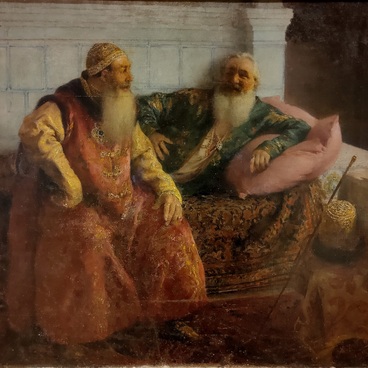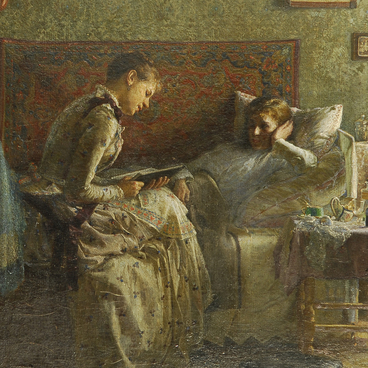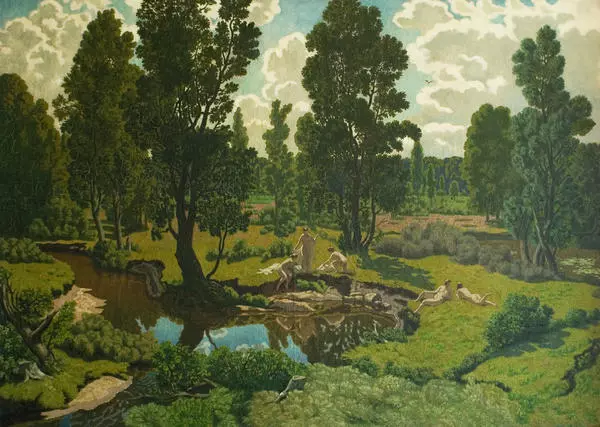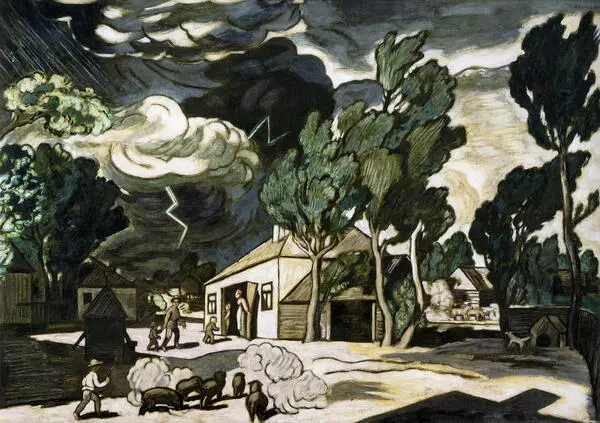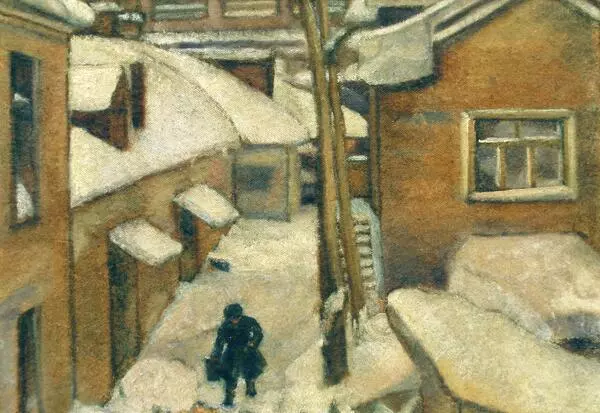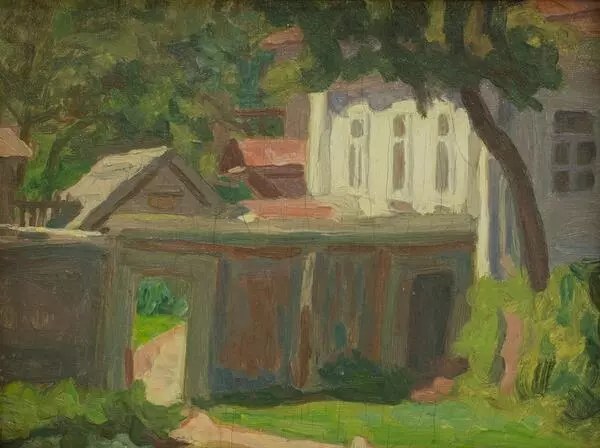Nikolay Krymov painted the sketch ‘Roofs, ” in 1931. He painted it with oil on a wooden panel. The artist saw this landscape from the window of his apartment, which overlooked the rooftops of old mansions in Moscow. The master artist looked out the window to find out that someone had already walked on top of the snow-covered rooftop — there were footprints everywhere. Nikolay Krymov quickly sketched the view in order to capture the moment’s beauty.
He painted ‘Rooftops, ” at the height of his career. By the 1930s the artist had already developed the method on “general tone.” In this illustration, he subtly conveyed the ratio between light and dark.
It is thought that by the 1920s, Nikolay Krymov finally formulated the basis of his work. The most important place belonged to the reflection of the “general tone, ” in a picture. The tone is the power of light in color. One color (for example, orange) might be lighter or darker — this “lightness, ” or “darkness, ” is called the tone. The master artist called the illumination of nature the “general tone, ” at different times of the day: for example, the general tone of nightfall is darker than the general tone of noon. In order to determine the luminosity, he used a burning match like a tuning fork.
In the article “About Levitan” Nikolay Krymov spoke in detail about his research. He wrote that for a long time he couldn’t understand how ’…Levitan was convincingly and completely able to use wide brush strokes in order to illustrate grass, huts, trees, and the sky. Even after trimming the flowers and all the details of the landscape I could not achieve the same effect using the same application.’ The master artist wrote that for the longest time he had struggled with this problem, but he eventually found a solution. Working on the landscape on a grey day, he excessively brightened up the general tone of the painting and no matter how hard he tried to accurately convey the details, he could not succeed. Then the artist realized that the mistake was due to the use of the wrong general tone.
‘Surely, ’ he stated, ‘by checking the theory and looking at some of the best works of Russian and foreign painters, I determined that artists who’ve found the correct general tone in their paintings, create objects, the earth, and the sky which look vivid and lush, realistic and alive. Once the correct general tone is found, it is much easier for the artist to paint all the details. <…> sometimes one true hint at the correct spot is enough for the image to be perceived as a real object.’
He continued to improve and expand on this method for the rest of his life. Today his concept of “general tone” is widely used in the world of art.
He painted ‘Rooftops, ” at the height of his career. By the 1930s the artist had already developed the method on “general tone.” In this illustration, he subtly conveyed the ratio between light and dark.
It is thought that by the 1920s, Nikolay Krymov finally formulated the basis of his work. The most important place belonged to the reflection of the “general tone, ” in a picture. The tone is the power of light in color. One color (for example, orange) might be lighter or darker — this “lightness, ” or “darkness, ” is called the tone. The master artist called the illumination of nature the “general tone, ” at different times of the day: for example, the general tone of nightfall is darker than the general tone of noon. In order to determine the luminosity, he used a burning match like a tuning fork.
In the article “About Levitan” Nikolay Krymov spoke in detail about his research. He wrote that for a long time he couldn’t understand how ’…Levitan was convincingly and completely able to use wide brush strokes in order to illustrate grass, huts, trees, and the sky. Even after trimming the flowers and all the details of the landscape I could not achieve the same effect using the same application.’ The master artist wrote that for the longest time he had struggled with this problem, but he eventually found a solution. Working on the landscape on a grey day, he excessively brightened up the general tone of the painting and no matter how hard he tried to accurately convey the details, he could not succeed. Then the artist realized that the mistake was due to the use of the wrong general tone.
‘Surely, ’ he stated, ‘by checking the theory and looking at some of the best works of Russian and foreign painters, I determined that artists who’ve found the correct general tone in their paintings, create objects, the earth, and the sky which look vivid and lush, realistic and alive. Once the correct general tone is found, it is much easier for the artist to paint all the details. <…> sometimes one true hint at the correct spot is enough for the image to be perceived as a real object.’
He continued to improve and expand on this method for the rest of his life. Today his concept of “general tone” is widely used in the world of art.

